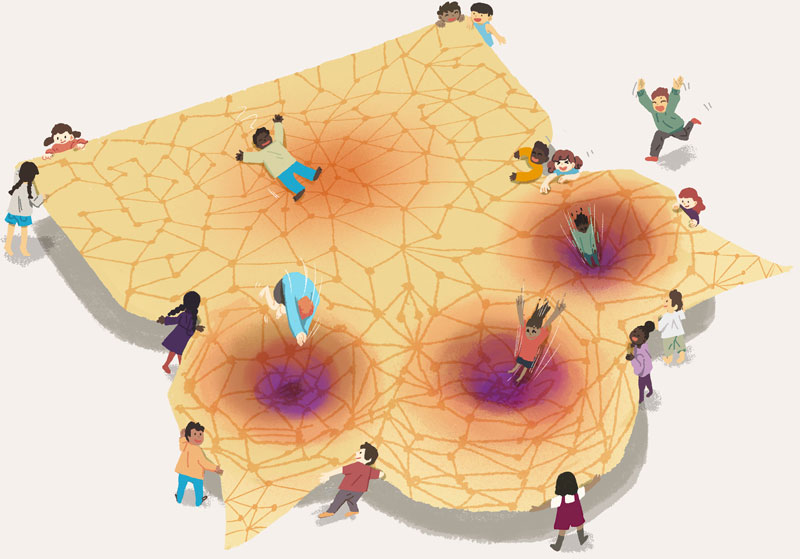Miguel Aguilera complex systems, neuroscience and cognition
Explosive neural networks via higher-order interactions in curved statistical manifolds

We’ve just published a new paper in Nature Communications, introducing a novel class of networks: explosive neural networks. In collaboration with Pablo Morales, Fernando Rosas, and Hideaki Shimazaki, we explore how ideas from information geometry can be used to curve the energy landscape of associative memory models. This geometric twist leads to explosive phase transitions in memory retrieval dynamics, significantly boosting both capacity and robustness compared to classical models.
Thanks to the media teams at the University of Sussex, Kyoto University, and BCAM, we’ve also released a press release highlighting the significance of studying neural and complex networks through a thermodynamic lens. You can read the release in Japanese and Spanish. The article is beautifully illustrated by Robin Hoshino.

- Aguilera M, Morales PA, Rosas FE & Shimazaki H (2025). Nonequilibrium thermodynamics of the asymmetric Sherrington-Kirkpatrick model. Nature Communications 16, 6511.
Abstract
Higher-order interactions underlie complex phenomena in systems such as biological and artificial neural networks, but their study is challenging due to the scarcity of tractable models. By leveraging a generalisation of the maximum entropy principle, we introduce curved neural networks as a class of models with a limited number of parameters that are particularly well-suited for studying higher-order phenomena. Through exact mean-field descriptions, we show that these curved neural networks implement a self-regulating annealing process that can accelerate memory retrieval, leading to explosive order-disorder phase transitions with multi-stability and hysteresis effects. Moreover, by analytically exploring their memory-retrieval capacity using the replica trick, we demonstrate that these networks can enhance memory capacity and robustness of retrieval over classical associative-memory networks. Overall, the proposed framework provides parsimonious models amenable to analytical study, revealing higher-order phenomena in complex networks.
Written on August 4th, 2025 by Miguel Aguilera